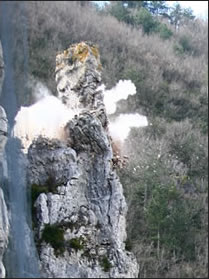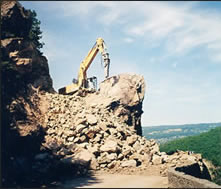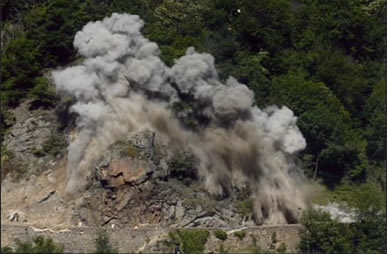Blasting worksField of applicationBlasting techniques are essentially applied to rocky materials. Blasting may serve several purposes: Basic PrinciplesBlasting consists in fragmenting rocks by inserting explosives in a drill hole. Although a single charge may suffice to fragment a simple block, rocky massifs require more or less closely-packed multiple charges.
|
Different types of explosivesThere are two main types of explosives: There are three main groups of explosives:
Explosives ill only work when associated with a detonating device and a priming device (pyrotechnic, micro-timed electric, electronic (sequential) or non-electric detonator).
Explosives are classified according to various parameters : |
Firing planThe firing plan is a document that must list certain elements of information elaborated by the engineer: DrillingDrilling operations matter because they will determine the quality of the firing plan. |
"Pre-zoning detonations make it possible to individualize the masses to be mined and hence limit the impact of Blasting on the non-excavated areas bordering the zone of activity." |
Caution measures relative to BlastingBlasting is often a quite impressive technique that may generate a number of risks and nuisances which can be perfectly controlled if the company undertaking the works is competent.
|
|||
Keep in mind that geotechnical studies are indispensable to ensure the durability of the projected works.






